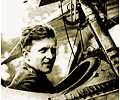In attempting
to create a unit on Canadian Heroes I found many difficult questions arose
concerning definitions, timelines, and themes. How do we, under a historical
and philosophical rubric, define a
hero, let alone a Canadian
hero?
Is there an axiom we can apply to these definitions? How do we maintain relevance
to the Ontario curriculum and to the students? How do we assess and evaluate
progress in this field of study? These questions were not easy to answer
and in truth I think I have only scratched the surface.
And then things got difficult.
As a student of History I was forced to ask the traditional 5 W's.
Who are possible
candidates? What were their contributions? Where do I find the appropriate
information? When did they live? Why are they significant? To these questions
came more questions and as a result I decided to create an inventory. The
development of this process, I hope, is reflected throughout this unit
and was the primary inspiration for
The Project
My goal was
to create a VERY user-friendly, curriculum based unit incorporating the
vast resources of
Canada's Digital Collections
Program. I hope I have succeeded in this endeavor. I have attempted
to leave several areas of the lesson planning adaptable to teacher discretion.
Items such as Time, Mindmaps, and Socratic dialogue can be easily adjusted
to fit your classroom needs. In addition this unit can be modified to allow
a group of students to research a Canadian hero. This can be done by simply
assigning the project package - Project Worksheets 1-5, Peer Assessment,
Peer Suggestion Sheets, project folder - to a group rather than an individual.
In my own attempts
to uncover the mysteries locked within the great annals of History,
I
have often been humbled, and intimidated, by the vast amount of data and
research available, particularly now with the advent of the Internet. Indeed,
history is a nebulous character and our efforts to understand it can often
be frustrated by this greatness. I believe my students have also had this
experience. Many times they have expressed similar frustrations stating
that because "everything has already been figured out" there are no new
arguments to develop and therefore no new or original thesis to be formulated.
I often find their logic quite intriguing and have had difficulty refuting
their protests. I sympathize, as I too have read books, watched films (I
must admit to being an avid film enthusiast), and seen Internet sites that
are so informative they seemingly leave no work to be done.
It is when
I come to this juncture, when the temptation to watch a movie begins to
override my need to study history, that I remember history is just like
a film with key players, crucial developments, climatic and anti-climatic
scenes, heroes and villains …. It is truly amazing; as we watch this production
the more we see how everything in it, every player, every scene, is interconnected
through millions of strands of human development and achievement. It is
the greatest screenplay ever written. I have often expressed this perception
to my classes. As I see it, if my students talked about history with a
fraction of the same enthusiasm found in various informal dialogues concerning
their favorite movies and TV shows I might have a chance of creating an
effective and stimulating educational environment.
This unit is
designed to challenge history students by encouraging research and analysis,
critical thinking, argument development, and effective communication skills
both written and oral. Students will have the opportunity to explore the
lives of a wide variety of Canadian heroes whose stories and beliefs are
as diverse as the many people who constitute the Canadian Identity.
Another important
aspect of this unit involves helping students develop a greater understanding
of what it means to be Canadian. Throughout their studies students will
learn how individuals contributed to development of modern day Canadian
society and, hopefully, find heroes of their own to admire and learn from.
Our country has a proud history that should be studied and enjoyed by our
students.













